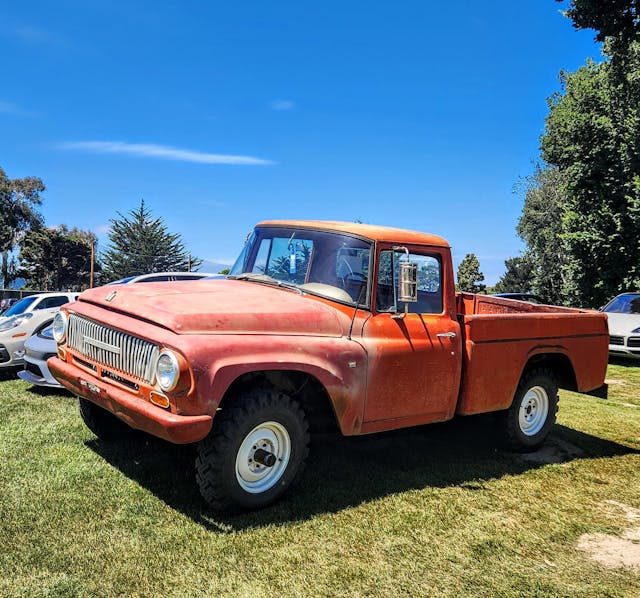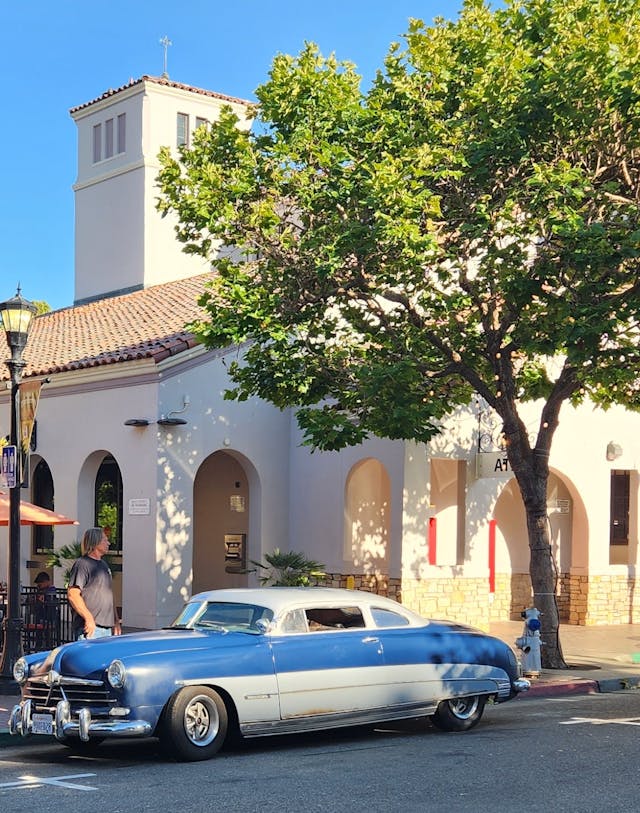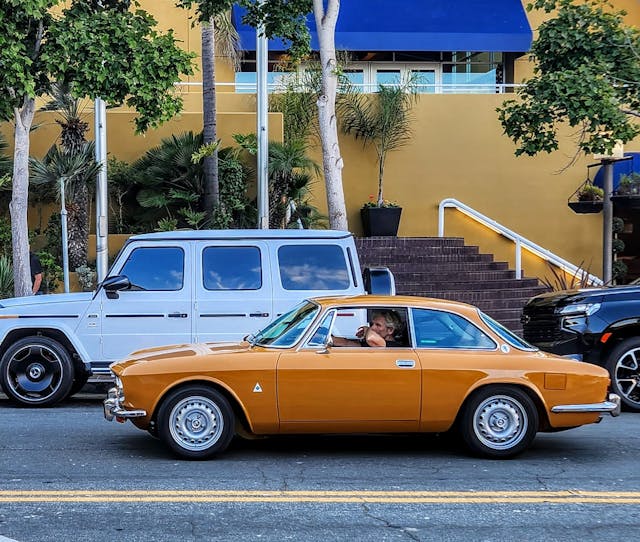My 6 favorite street-parked classics from Monterey Car Week

Monterey Car Week provides opportunities to see some of the most exclusive and expensive cars on the planet. The ones parked on golf courses at shows like The Quail or the Pebble Beach Concours d’Elégance are next-level stuff, no question. But ask people who have been going to Car Week for years and they are quick to point out that the local cars, or the ones that actually drive hundreds of miles to attend Car Week, are often just as interesting (if not even more so) than the ones at the fancy car shows.
Here are a few favorites seen parked around Monterey. Since there were no car cards handy, I’m taking my best-educated guess at model years:
1966 or 1967 International Harvester Pickup

What is it? The C-series International Harvester Pickup dates back to 1961, and lasted until 1970, so this example came roughly midway through the model run. The C-series was produced in various sizes and capacities, including one of the first crew-cabs, which International called the Travelette.
Why do I love it? Trucks like this simply don’t exist outside of California. The Tow-Mater style patina was irresistible. While most of the paint was burned off, there was just a light coating of surface rust, almost like a suntan, in its place. There didn’t seem to be any structural rust at all. Whether you’re hauling surfboards, dirt bikes, cantaloupes, or anything else, it’d be difficult to go wrong with this handsome old truck.
1970 Datsun 240Z

What is it? First year examples of the classic Z-car are easily spotted by the pair of small vents below the rear window. This is the car that put Japanese sports cars on the map in the U.S. and everywhere else.
Why do I love it? As 240Zs move upward in price, it’s getting more unusual to see them used, enjoyed, and street parked. This one was sitting in downtown Monterey, looking like something you’d see in the background of your favorite episode of “The Rockford Files.” The paint on this one appeared to be original, and the slotted mag wheels were probably added by the original selling dealer to add a little more profit to the Z-car’s ultra-reasonable $3,500 original MSRP.
1952 Hudson Hornet

What is it? Hudson built some of the most interesting cars of the early 1950s. Their step-down chassis gave them a lower center of gravity than competing American cars, they handled better, and thus dominated NASCAR.
Why do I love it? This example appears to be a vintage California custom—the roof has been mildly chopped and it’s riding on what looks like a set of early 1970s vintage Pontiac Rallye II wheels. The two-tone paint looked like it last had a shine during the Nixon administration, and I wouldn’t change a thing.
1971 Alfa Romeo 1750 GTV

What is it? The 105-Series Alfa Romeo coupe debuted in 1966 as the Giugiaro-designed Giulia with a unique step-nose design and 1600 cubic centimeters of displacement. This facelifted car dispensed with the step-nose, and added quad round headlights and a new 1750-cc engine.
Why do I love it? These Alfa GTVs are so achingly handsome, they handle beautifully, and sound great. This one looked really special in its super-shiny Yellow Ochre paint, which is a dead-ringer for one of my favorite Porsche colors, Bahama Yellow. It was probably one of the handsomest Alfas I saw all weekend.
1975 Cadillac Eldorado

What is it? The mid-’70s Eldosaurus was probably one of the most audacious Cadillacs of the pre-downsizing era. Weighing in at an SUV-like 5,106 lbs., it took an 8.2 liter/500 cubic inch V8 to motivate it. In true Malaise Era fashion, said engine produced only 190 hp. Oh, and it was front-wheel-drive.
Why do I love it? Two words—steer horns.
2001 BMW Z3 3.0 Coupe

What is it? The original Z3 was a lovely little roadster. Like other open BMWs of the time, it suffered from its share of cowl-shake. The addition of a breadvan-like fixed roof to the Z3 solved the structural rigidity issue, and added a bit of practicality to the mix.
Why do I love it? These are super quirky cars, and perhaps second only to the BMW 2002 in terms of having a genuine cult following. They’re affectionately referred to as “clown shoes.” BMW sold very few of them in comparison to the roadsters, so they’ve always been rare sights, and this one, parked on the grass at PCA’s Werks Reunion, looked absolutely gorgeous in spite of its indicated 200,000 plus miles.
***
Check out the Hagerty Media homepage so you don’t miss a single story, or better yet, bookmark it. To get our best stories delivered right to your inbox, subscribe to our newsletters.


Rob, more reasons to live the Eldorado Convertible than just the horns, how about almost three tons of American car to drive around two adults, four in a pinch while getting 12mpg , priceless, but we will give you a pass. However Rob Segial may take exception, to your referencing BMW 2002 owners as members of a cult. Rob S has multiple copies of 2002’s and also has a clown shoe. Wait a minute, owns multiple 2002’s and a clown shoe, guess you were on to something, never mind.
1975 Cadillac Eldorado
Why do I hate it? Two words—steer horns.
With the torque of that 500, you’d never know it had just 190 hp!
Back in the 70s, this was the working ladies favorite car. Well almost working. During the 70s a handful of ladies that lived up in the hills of Encino and had it made. They were all the wives of what was soon to become the Baby Boomers first pass at the upper level businesses that their uncle’s owned, or someone else they knew. They all had new businesses located in one of black or mirror faced office buildings that lined Ventura Blvd in Encino and Sherman Oaks. No body ever knew what their jobs were, but they made boatloads of money. The wives owned little antique stores, or women’s clothing stores. These ladies all wore white pant suites, wore tons of gold jewelry that made noise when they walked, and they all drove white convertible”Eldo”s that looked like the one in your article. They were all horrible drivers that never paid attention white they raced up and down Ventura Blvd. And if they weren’t driving their Eldos they were in Germany sniffing around for an those special antiques. The Eldos were the ultimate status symbol. For realz.